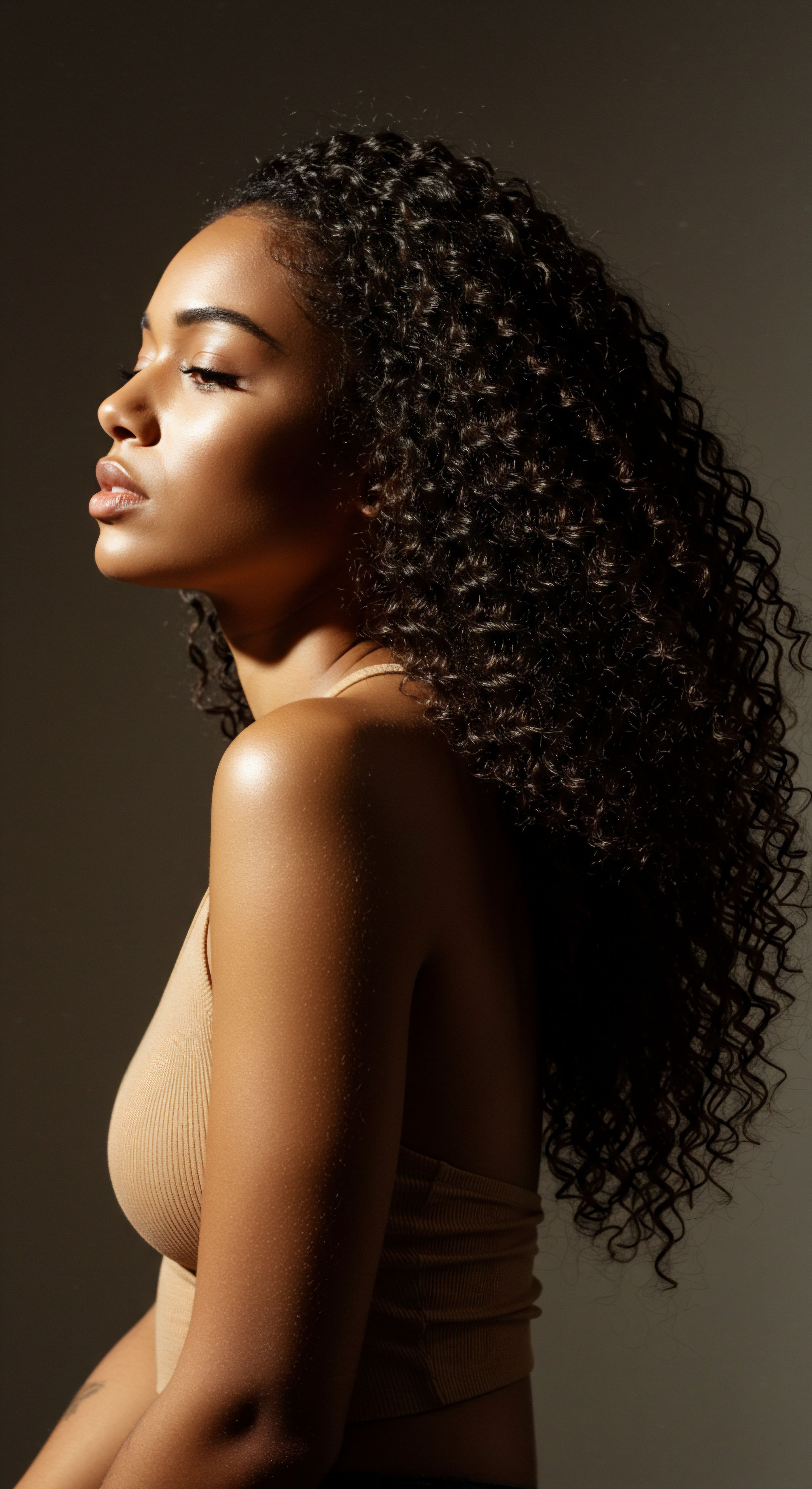
Roots
As the quiet hours of night descend, bringing respite to the world, a subtle yet significant interplay begins for those with coily hair. It is a time when rest can either become a silent ally, preserving the delicate structure of each curl, or an unwitting antagonist, contributing to the very damage we seek to avoid. The rhythm of sleep, with its unconscious shifts and turns, introduces unique considerations for hair that possesses an inherent inclination towards dryness and breakage. To truly understand how sleep positions can protect coily hair, one must first appreciate the very nature of these remarkable strands, their unique architecture, and the environmental whispers that affect them even in slumber.
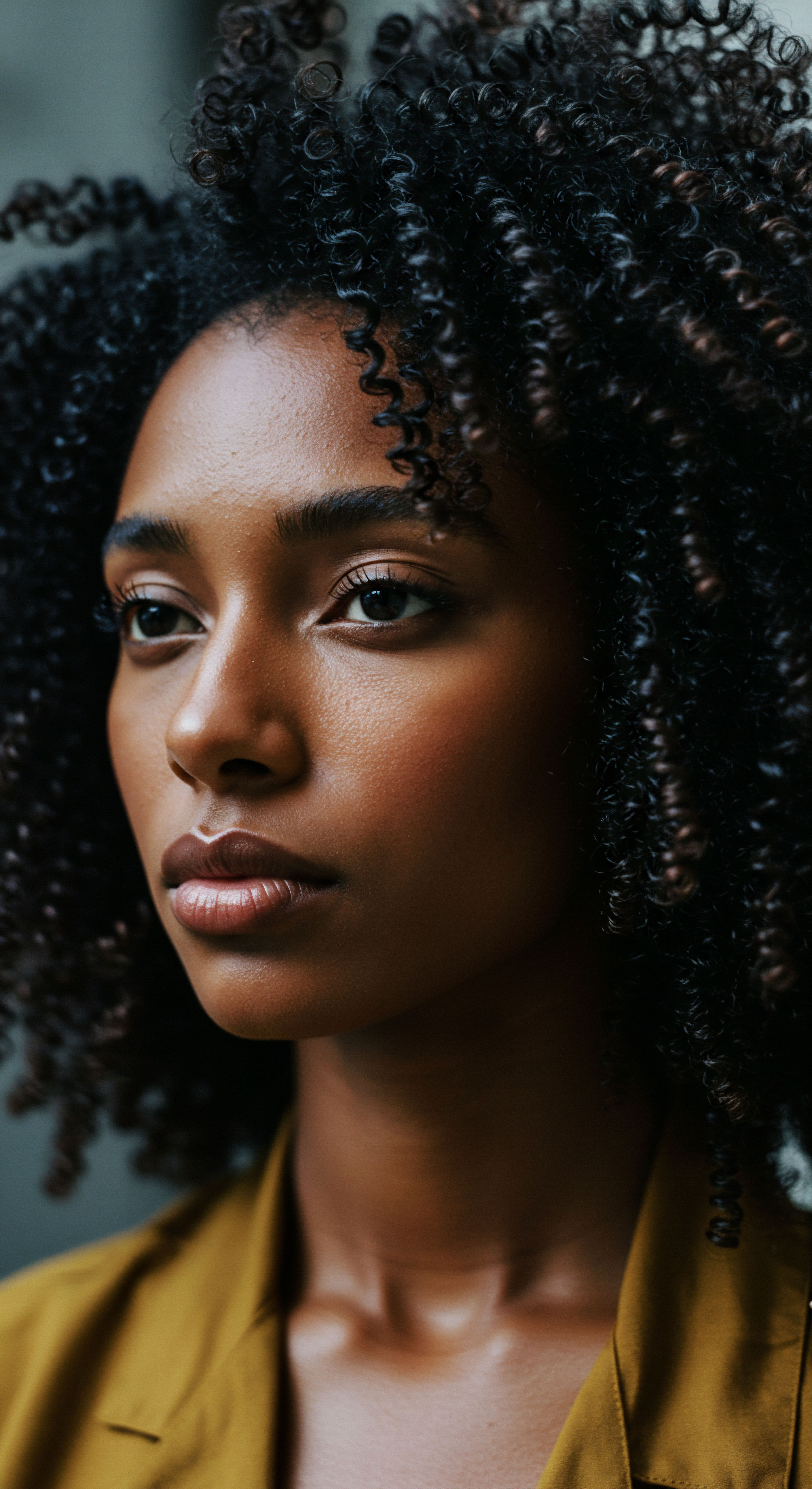
Understanding Coily Hair’s Distinctive Structure
Coily hair, often described as having tight, spring-like spirals or zigzag patterns, stands apart in its physical characteristics. Unlike straight or wavy textures where sebum, the scalp’s natural conditioning oil, travels with relative ease down the hair shaft, the pronounced curves and bends of coily strands impede this natural lubrication. This structural reality renders coily hair more susceptible to dryness, which in turn elevates its fragility.
The cuticle, the outermost protective layer of the hair, consisting of overlapping scales, is particularly vulnerable. When dry, these scales can lift, snag, and chip away, exposing the inner cortex and leading to increased breakage.
The unique biomechanics of coily hair, including its curvature and spiral follicles, introduce inherent points of weakness along the fiber. These structural characteristics make the hair less resistant to mechanical extension and more prone to premature failure. Even seemingly gentle actions, such as passing a comb through coily hair, can cause breakage if the strands are unable to separate without some breaking. During sleep, these inherent vulnerabilities are amplified by constant friction against pillow surfaces and the pressure from body weight.
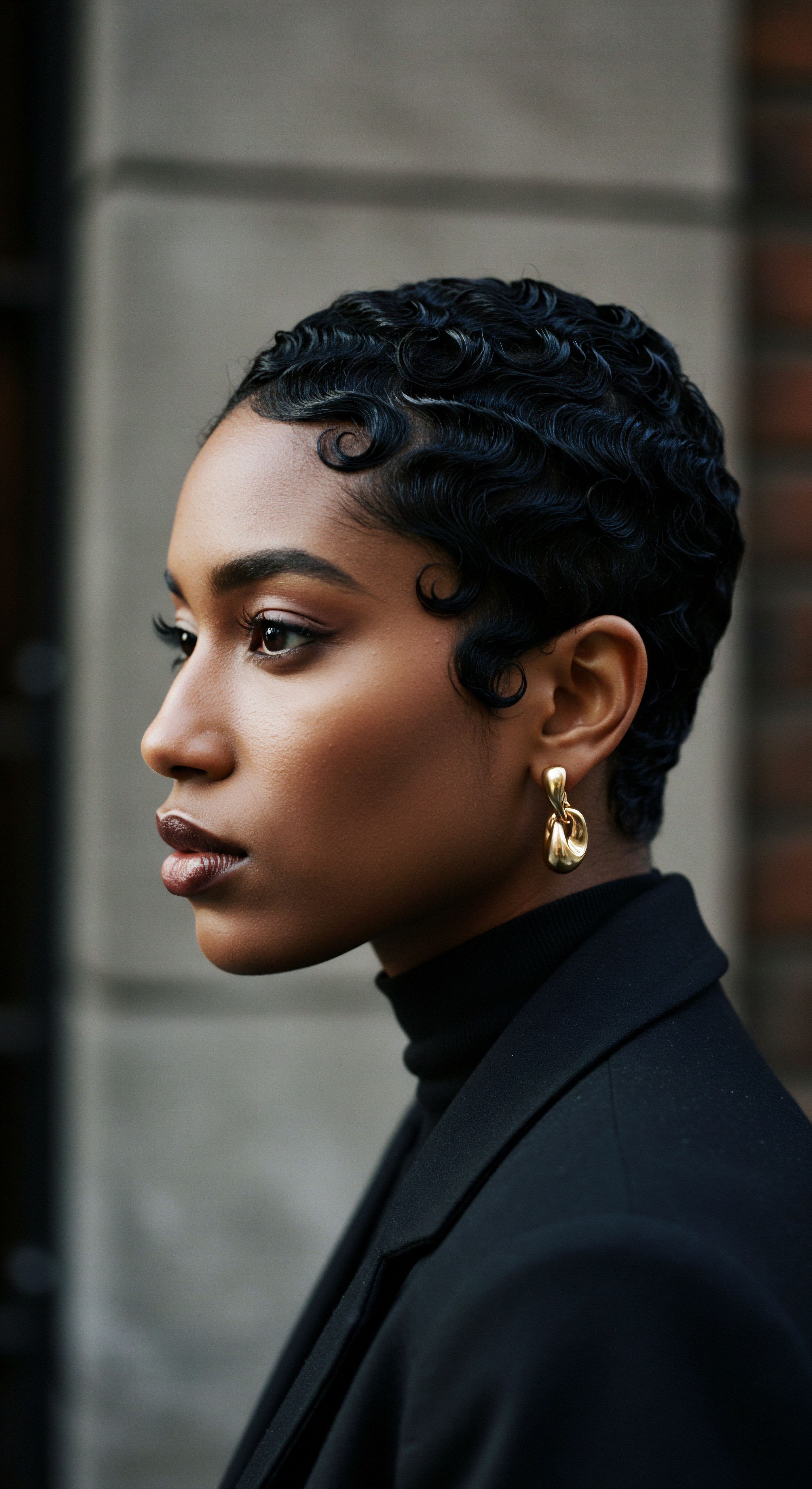
What Makes Coily Hair More Susceptible to Damage?
The architectural design of coily hair means it requires a specialized approach to care, especially during periods of unconscious movement like sleep.
- Reduced Sebum Distribution ❉ The helical shape of coily strands prevents natural oils from coating the entire length, leaving ends particularly parched. This dryness weakens the hair, making it brittle.
- Cuticle Vulnerability ❉ The cuticle layers on coily hair are more exposed at the bends of the coil, making them prone to lifting and chipping from external forces.
- Inherent Fragility ❉ Studies indicate that coily hair possesses lower tensile strength and fracture points compared to straighter textures, making it more prone to breakage from mechanical stress.
Coily hair’s distinct helical structure inherently limits natural oil distribution, increasing its susceptibility to dryness and mechanical damage during sleep.

The Silent Aggressors of Night
While sleep offers essential restoration for the body, it can, paradoxically, be a period of significant stress for coily hair. The seemingly benign act of resting can become a source of mechanical wear and tear.
The primary culprits are friction and tension. As one shifts and turns throughout the night, hair rubs against pillowcases, particularly those made of absorbent materials like cotton. This constant rubbing creates friction, which roughens the cuticle, leads to frizz, and can ultimately cause breakage. Beyond friction, the weight of the head resting directly on loose hair can create tension and crushing forces, distorting the natural coil pattern and contributing to matting and tangles.
| Aggressor Friction |
| Mechanism of Damage Hair rubbing against rough surfaces like cotton pillowcases. |
| Consequence for Coily Hair Cuticle lifting, frizz, tangles, split ends, breakage. |
| Aggressor Tension/Compression |
| Mechanism of Damage Hair strands pulled or crushed under body weight. |
| Consequence for Coily Hair Distorted curl pattern, matting, breakage at stress points. |
| Aggressor Moisture Loss |
| Mechanism of Damage Absorbent fabrics drawing hydration from hair. |
| Consequence for Coily Hair Dryness, brittleness, increased fragility. |
| Aggressor Static Electricity |
| Mechanism of Damage Build-up from movement against certain fabrics. |
| Consequence for Coily Hair Frizz, flyaways, further cuticle disturbance. |

Ritual
As the evening light softens and the day’s demands recede, a conscious shift towards preserving our hair’s vitality becomes a practice of self-care. The choices made in these twilight hours hold considerable sway over the morning’s outcome for coily strands. Moving beyond a foundational grasp of hair’s architecture, we step into the realm of applied wisdom, exploring the tangible methods and gentle customs that safeguard coily hair during sleep. This section delves into the practical aspects of nocturnal hair care, offering pathways to wake with coils that feel respected and ready for the day.
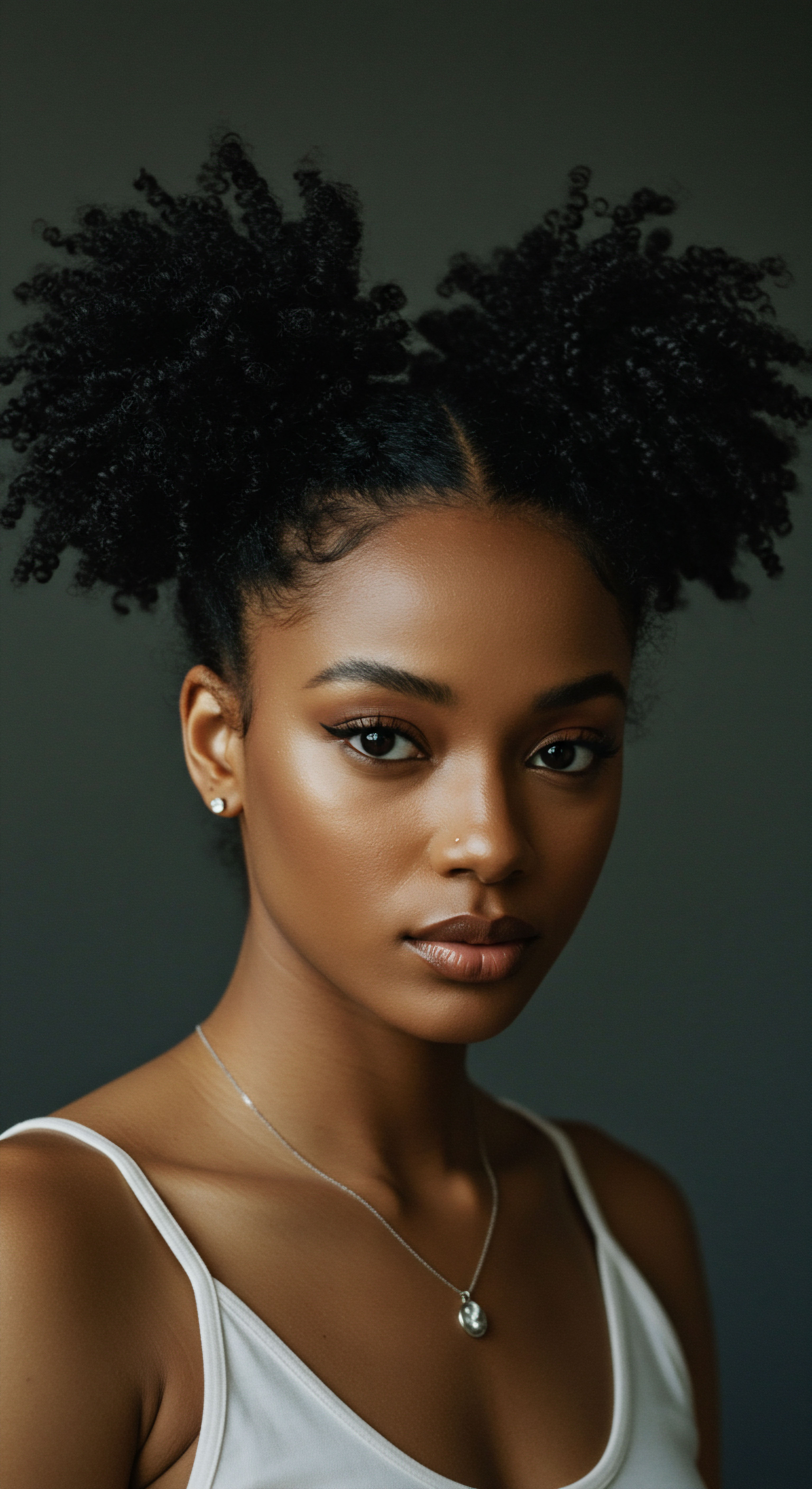
What Nocturnal Hair Practices Safeguard Coily Hair?
The journey to protecting coily hair overnight begins with intentional preparation. This involves both how the hair is gathered and what it rests upon. The aim is always to minimize friction, reduce tension, and preserve moisture.
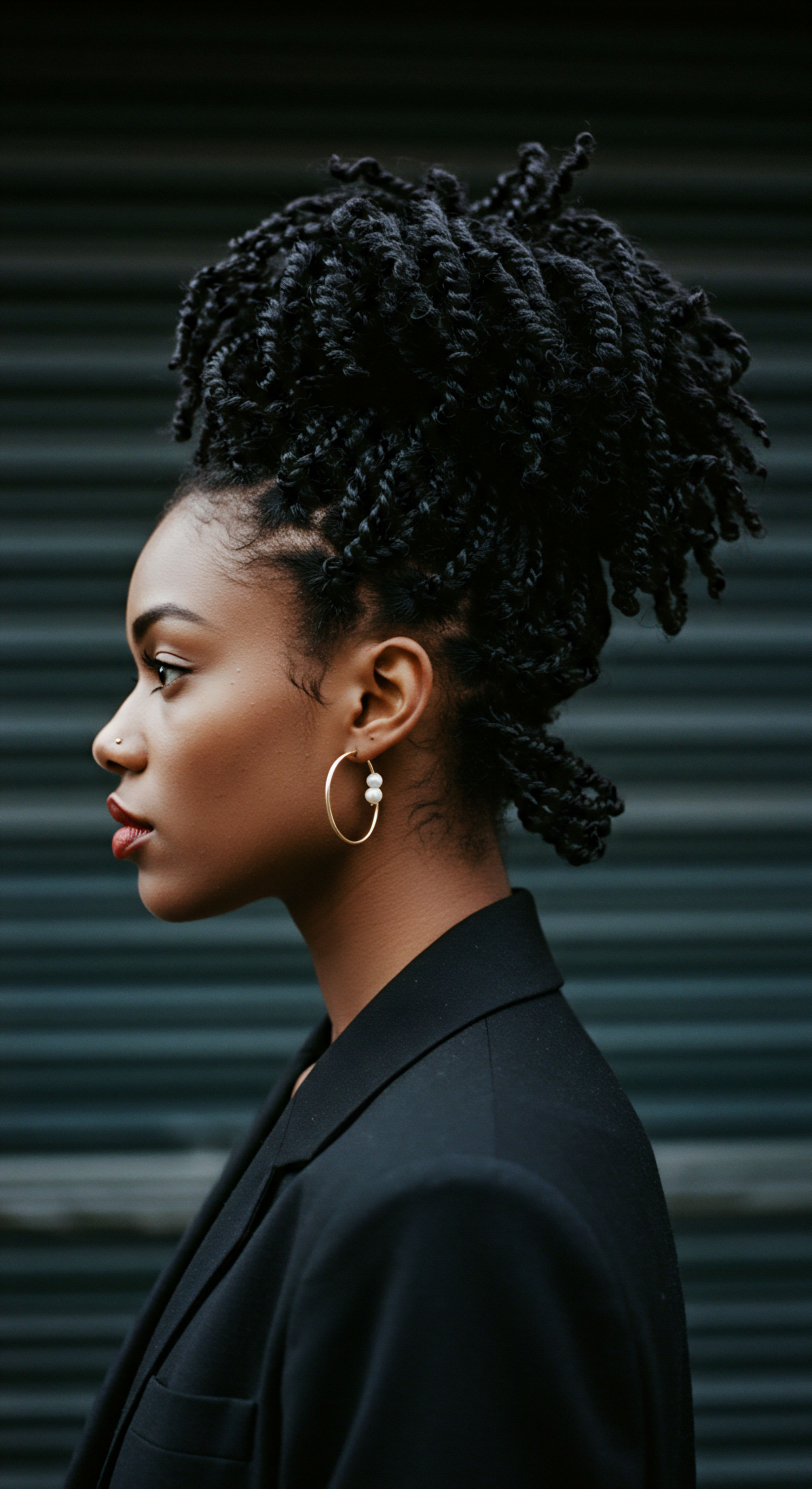
Protective Styles for Peaceful Sleep
The concept of protective styling extends beyond daytime aesthetics; it serves as a vital shield against damage during sleep. These styles work by containing the hair, limiting its exposure to abrasive surfaces, and preventing tangling.
- The Pineapple Method ❉ This widely favored technique involves gathering all hair loosely at the very top of the head, often secured with a silk or satin scrunchie. The resulting high, loose ponytail resembles a pineapple, keeping the bulk of the hair elevated and off the pillow. This reduces friction and prevents the crushing of curls, particularly beneficial for those with longer coily hair who desire to maintain volume. For shorter coily hair, multiple smaller pineapples can achieve a similar effect.
- Loose Braids and Twists ❉ Creating one or several loose braids or two-strand twists before bed offers an excellent way to contain strands. This method significantly reduces tangling and friction, while also helping to preserve curl definition. It is important that these styles are not pulled too tightly, as excessive tension on the scalp can cause discomfort and even lead to traction alopecia over time.
- Bantu Knots ❉ This traditional African hairstyle involves sectioning hair, twisting each section, and wrapping it to form spiraled knots. Bantu knots provide excellent protection by fully containing the hair and minimizing contact with pillow surfaces. They also offer the added benefit of creating defined curls when unraveled in the morning.
Strategic protective styling, such as the pineapple, loose braids, or Bantu knots, offers a foundational shield for coily hair against nocturnal friction and tension.

The Significance of Sleep Surfaces and Coverings
Beyond how the hair is styled, the surface it rests upon plays a substantial role in its nightly well-being. Traditional cotton pillowcases, while common, can be detrimental to coily hair. Their absorbent nature draws moisture from the hair, leading to dryness, and their rough fibers create friction that can snag and damage the delicate cuticle.

Silk and Satin ❉ A Gentle Embrace for Coils
Switching to a pillowcase made of silk or satin is a widely recommended practice for protecting coily hair. These materials possess a smooth, low-friction surface that allows hair to glide rather than snag, significantly reducing breakage and frizz.
While both silk and satin offer a smoother surface than cotton, it is important to note their distinctions. Silk is a natural protein fiber, renowned for its breathability and moisture-retaining properties. Satin, conversely, refers to a type of weave and can be made from various materials, including synthetic ones like polyester. While satin offers a smooth feel, synthetic satin may not provide the same level of breathability or moisture preservation as natural silk.
A study published in the Journal of Textile Science and Technology indicated that silk pillowcases retained 97% of moisture, compared to 75% for cotton and 60% for satin. This highlights silk’s superior ability to maintain hair hydration throughout the night.
For those who prefer additional protection or find their hair shifts even on a silk pillowcase, hair coverings offer an extra layer of defense.
- Satin Bonnets ❉ A satin bonnet acts as a personal cocoon for coily hair, enclosing it completely and shielding it from friction. This is particularly useful for active sleepers or those with very long or voluminous hair. Bonnets help to preserve styles, minimize frizz, and maintain moisture by preventing excessive exposure to dry air.
- Silk Scarves ❉ Similar to bonnets, silk scarves offer a versatile way to wrap and protect hair. They can be tied in various ways to secure protective styles, reduce tension, and ensure hair glides smoothly against surfaces. The history of head wraps, particularly in African cultures, extends back centuries, serving not only as protective coverings for hair during sleep and daily chores but also as symbols of status, ethnicity, and spiritual expression. This rich cultural heritage underscores the enduring practical and symbolic value of such coverings.
The conscious adoption of these nighttime rituals—from choosing gentle styles to selecting appropriate sleep surfaces and coverings—represents a thoughtful approach to preserving the health and vibrancy of coily hair.
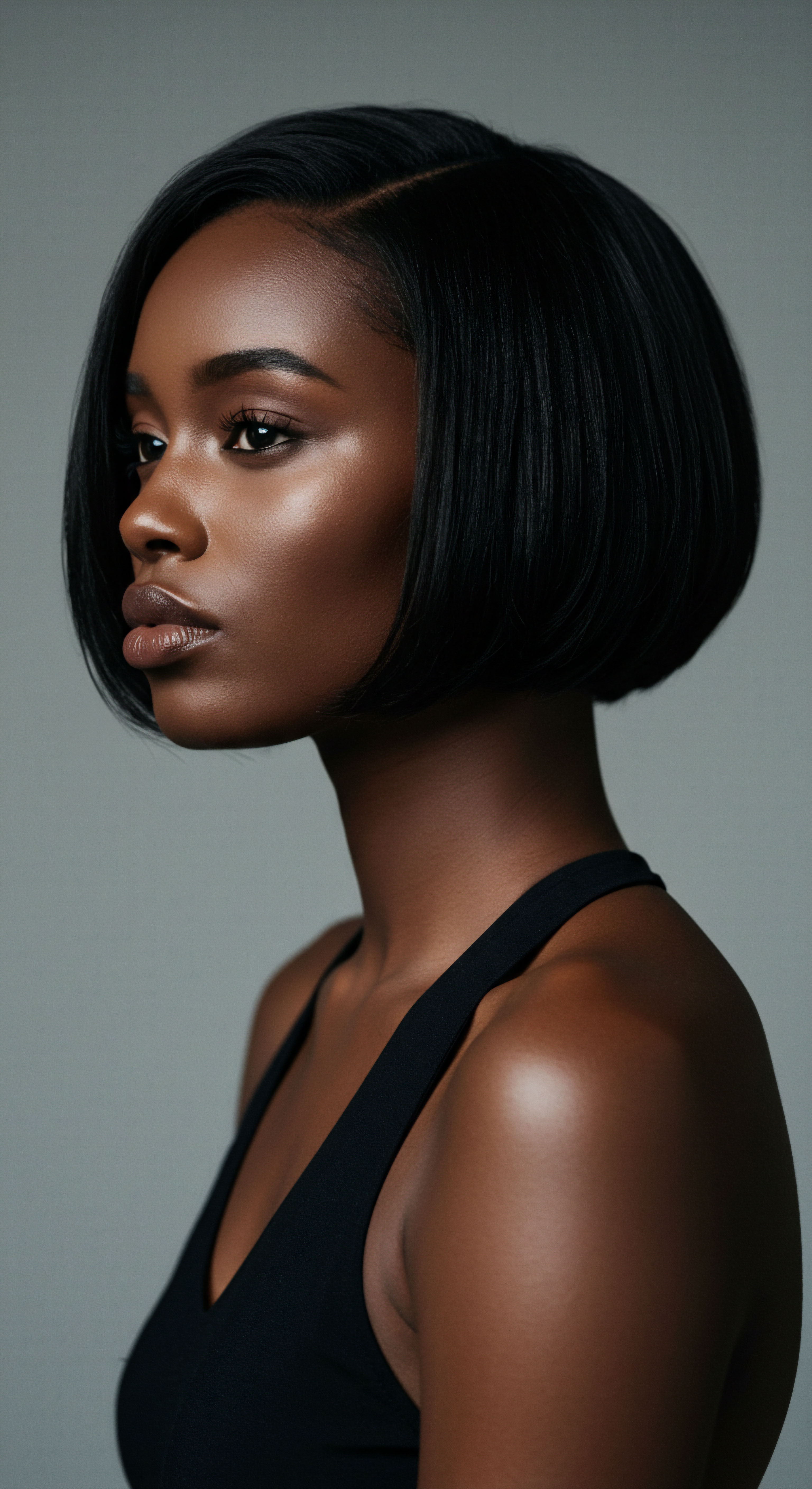
Relay
Beyond the tangible practices of nocturnal hair care, there exists a deeper interplay of forces that influence the integrity of coily strands during sleep. This section extends our exploration into the underlying scientific principles and broader contextual factors that shape hair health overnight, moving past surface-level discussions to a more profound understanding. We consider the microscopic mechanics of hair damage, the subtle influences of sleep patterns, and the historical echoes of hair protection.

How Does Friction Affect Hair at a Microscopic Level?
The impact of friction on hair, particularly coily hair, is not merely a matter of surface roughening; it extends to the very structural components of the hair fiber. The outermost layer, the cuticle, is composed of overlapping scales that lie flat when healthy. Mechanical forces, such as those generated by hair rubbing against a pillowcase, cause these scales to lift, chip, and eventually detach. This disruption exposes the inner cortex, leading to increased porosity, moisture loss, and ultimately, breakage.
Research on hair biomechanics reveals that the coefficient of friction (CoF) between hair and various surfaces is a critical determinant of damage. Studies have consistently shown that the CoF increases with the degree of curliness, meaning coily hair experiences greater friction and thus more potential for damage from mechanical manipulation.
A notable illustration of this principle comes from a study on fabric materials ❉ Slipssy’s Glidetex fabric, designed for pillowcases, demonstrated an exceptionally low coefficient of friction (μs ≈ 0.21) compared to other pillowcase materials (μs ≈ 1.17). This significant reduction in resistance directly translates to smoother movement for hair, mitigating damage. The presence of static electricity, often generated by hair sliding against textiles, further exacerbates cuticle damage. This reinforces why materials with lower friction coefficients and properties that reduce static charge are highly beneficial for protecting coily hair.
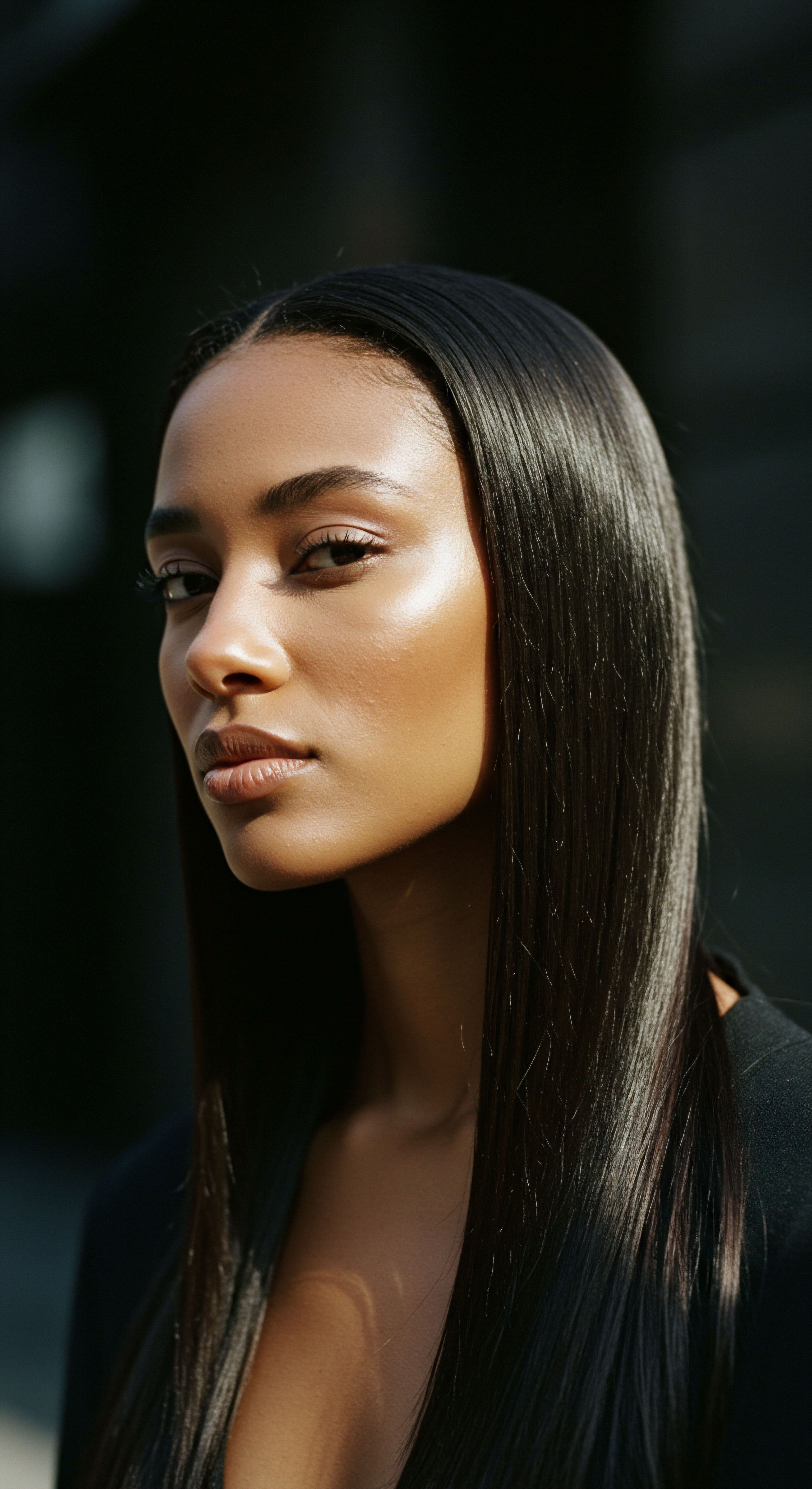
What Role Does the Coefficient of Friction Play in Hair Damage?
The measurement of the coefficient of friction (CoF) offers a quantifiable way to understand the mechanical stress hair endures.
- Lower CoF, Less Damage ❉ Materials with a lower CoF, such as silk, allow hair strands to glide with minimal resistance. This gentle interaction preserves the cuticle layer, reducing the likelihood of lifting, snagging, and subsequent breakage.
- Increased CoF, Greater Damage ❉ Rougher materials, like cotton, present a higher CoF. This causes increased drag and abrasion on the hair surface, leading to greater cuticle disruption and accelerated wear.
- Hair Condition Influence ❉ The CoF of hair itself can change based on its condition. Damaged hair, with its lifted cuticles, often exhibits a higher CoF than healthy, virgin hair, creating a cycle where existing damage makes hair more prone to further mechanical stress.

Does Sleep Quality Influence Hair Health Beyond Physical Friction?
The nightly restorative period extends its influence beyond the physical interaction of hair with surfaces; the quality of sleep itself plays a significant, though often overlooked, role in overall hair health. Adequate sleep is vital for the body’s repair and regeneration processes, which include those within the hair follicles.
Disruption of the sleep cycle can interfere with these essential processes, potentially affecting the hair growth cycle. Research suggests a link between sleep deprivation and increased risk of conditions like alopecia areata, a form of patchy hair loss. Moreover, insufficient sleep can elevate stress hormone levels, particularly cortisol. Elevated cortisol can disrupt the hair growth cycle, pushing hair follicles into a resting phase where they are more prone to shedding.
Consider a 2022 study that revealed a strong association between severe alopecia areata and sleep issues, including less than six hours of sleep, alongside high stress scores. This connection underscores that while external protection is paramount, internal well-being, deeply intertwined with sleep, forms a fundamental layer of hair resilience.
The subtle biomechanics of hair friction, quantifiable through the coefficient of friction, directly correlate with cuticle integrity, while the holistic quality of sleep influences hair health through hormonal regulation and cellular regeneration.
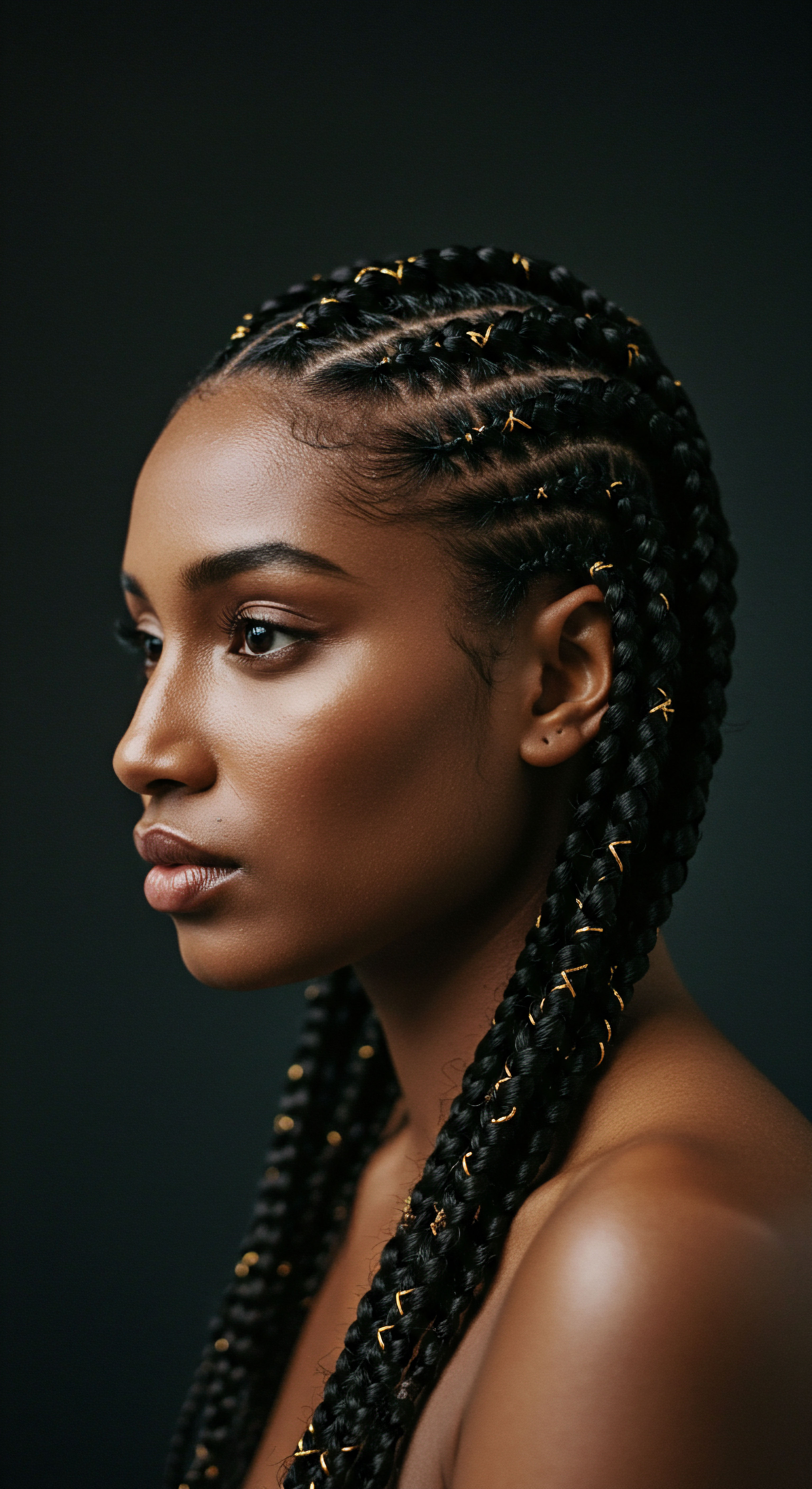
Cultural Echoes of Nighttime Hair Protection
The practice of protecting hair during sleep is not a modern invention; it resonates with centuries of cultural wisdom, particularly within African and diasporic communities. Head wraps and bonnets, now recognized globally for their protective qualities, carry a rich history that extends beyond mere utility.
Historically, head wraps, known by various names across Africa such as ‘geles’ in Nigeria or ‘dukus’ in Ghana, served multiple purposes. They were not only practical coverings for protecting hair from dust, dirt, and environmental elements during daily chores and sleep but also acted as powerful symbols of identity, marital status, wealth, and spiritual adherence. During periods of enslavement, head coverings were tragically weaponized as tools of control, forcing Black women to wear them as markers of subservience. However, Black women reclaimed these coverings, transforming them into expressions of creative and cultural defiance, adorning them with beautiful fabrics and embellishments.
This deep-rooted cultural context lends profound meaning to the contemporary use of satin bonnets and silk scarves. They are not simply accessories; they are continuations of ancestral practices, embodying a legacy of care, resilience, and self-preservation for textured hair. This historical continuity highlights a collective, enduring wisdom regarding the specific needs of coily hair, passed down through generations.
| Material Cotton |
| Coefficient of Friction (μs) Higher (e.g. ~1.17 for some fabrics) |
| Moisture Absorption High (absorbent) |
| Hair Benefits Increased friction, frizz, tangles, dryness, breakage. |
| Material Satin (synthetic) |
| Coefficient of Friction (μs) Lower than cotton, higher than silk |
| Moisture Absorption Moderate (can trap heat/moisture) |
| Hair Benefits Reduced friction, some frizz control, smoother feel. |
| Material Silk |
| Coefficient of Friction (μs) Lowest (e.g. ~0.21 for Glidetex fabric) |
| Moisture Absorption Low (retains moisture) |
| Hair Benefits Significant friction reduction, frizz control, moisture retention, less breakage. |
| Material Lower coefficient of friction and reduced moisture absorption directly contribute to healthier coily hair overnight. |
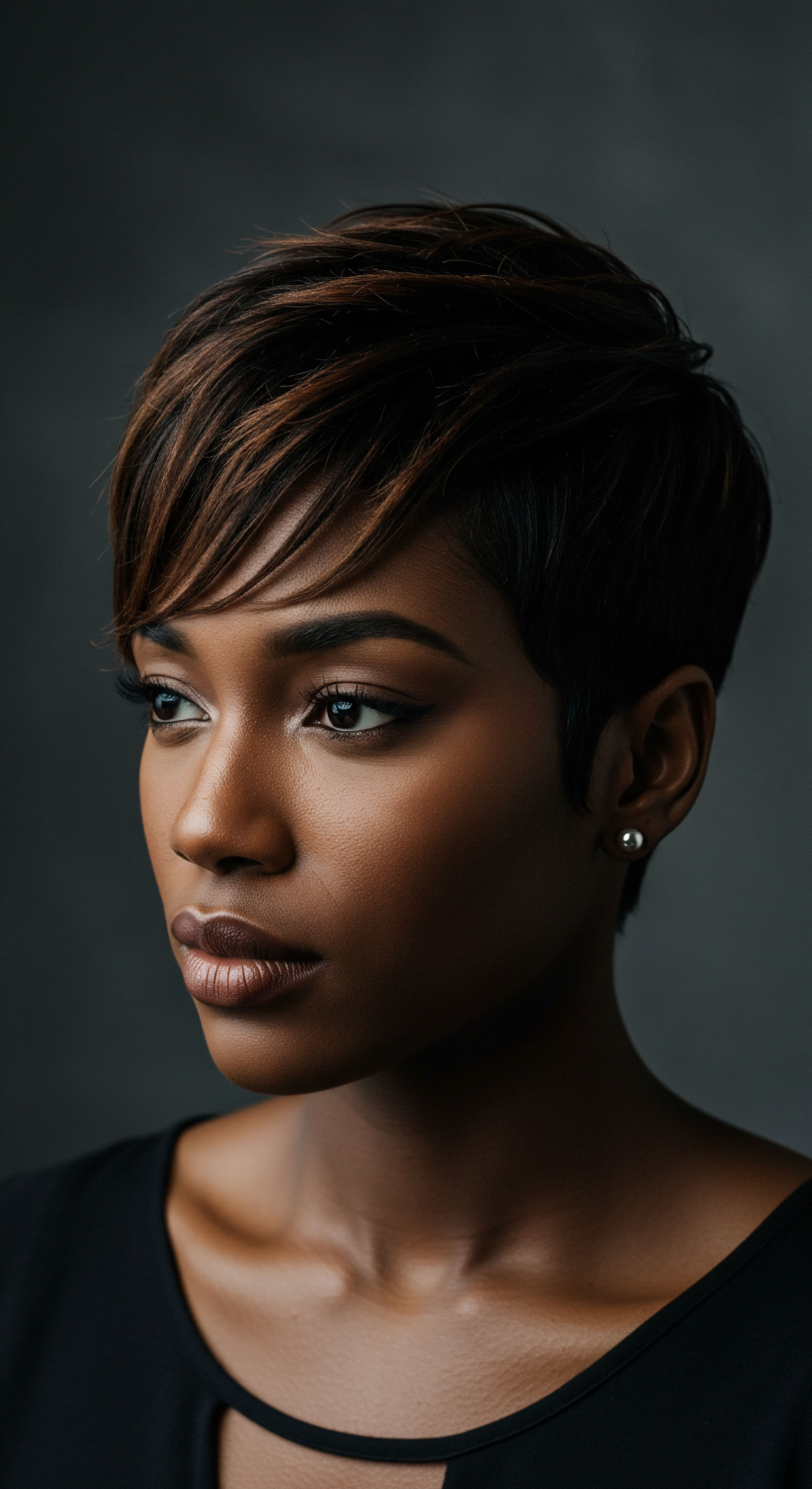
Reflection
As the quiet hours of night become a canvas for rest, the journey of protecting coily hair reveals itself as a multifaceted endeavor. It is a dialogue between the inherent characteristics of each unique strand and the thoughtful choices we make to safeguard its well-being. From the gentle art of arranging coils in a pineapple atop the head to the soft caress of silk against the skin, each practice speaks to a deeper understanding of hair’s needs. The nightly ritual, rooted in both scientific principles and cultural wisdom, transforms a period of unconsciousness into an active phase of care.
To truly shield coily hair from the wear of sleep is to honor its structure, to provide it with a haven of minimal friction and sustained moisture, and to acknowledge the interconnectedness of our overall health with the vibrancy of our crown. May your nights be a quiet testament to enduring beauty.

References
- Davis-Sivasothy, Audrey. The Science of Black Hair ❉ A Comprehensive Guide to Textured Hair Care. Sivasothy, 2011.
- El-Messiry, M. El-Messiry, S. & El-Mekkawi, H. Electric Static Charge Generated from the Sliding of Head Scarf Textiles against Skin and Hair. Journal of Textile Science and Technology, 2017.
- Gamez-Garcia, Manuel. Properties of the Hair Cuticle via Damage Analysis. Ciba Specialty Chemicals, 2005.
- Camacho-Bragado, G.A. et al. Understanding Breakage in Curly Hair. British Journal of Dermatology, 2015.
- Robinson, Vivian. The Effect of Grooming on the Hair Cuticle. Journal of the Society of Cosmetic Chemists, 1982.
- Bhushan, B. et al. Nanoscale Friction of Biomimetic Hair Surfaces. bioRxiv, 2022.
- Markiewicz, Ewa, and Olusola C. Idowu. Exploring the Use of Natural Ingredients for Textured Hair UV Protection. ResearchGate, 2023.
- Khumalo, Ncoza P. et al. “Relaxers” damage hair ❉ evidence from amino acid analysis. Journal of the American Academy of Dermatology, 2010.
- Sivasothy, Audrey Davis. The Science of Transitioning ❉ A Complete Guide to Hair Care for Transitioners and New Naturals. Sivasothy, 2013.
- Austin, Phoenyx. If You Love It, It Will Grow ❉ A Guide to Healthy, Beautiful, Natural Hair. Dr. Phoenyx Austin, 2012.